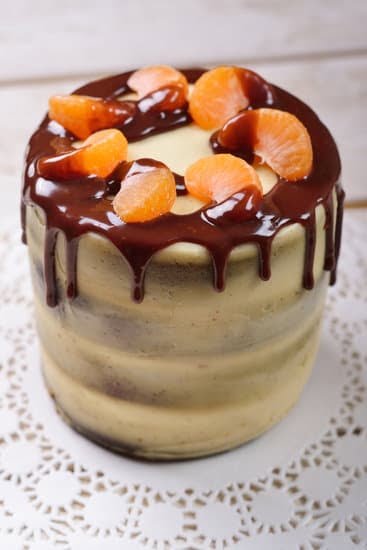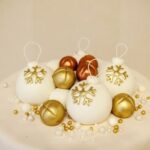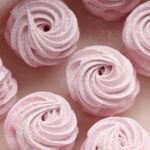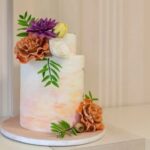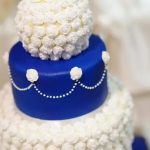Are you looking to elevate your cake decorating skills? Learn how to make frosting to decorate a cake and take your baked creations to the next level. Frosting is an essential component of cake decoration, adding flavor, texture, and visual appeal to a plain dessert. This article will guide you through the key steps in creating different types of frosting, from classic buttercream to indulgent chocolate ganache.
Frosting plays a crucial role in cake decorating, as it not only adds sweetness but also acts as a canvas for creative expressions. Different types of frostings offer varying tastes and textures, allowing decorators to customize their cakes according to their preferences and the occasion they are celebrating. From smooth and creamy buttercream to rich and decadent chocolate ganache, each type of frosting brings its own unique charm to the dessert table.
In the upcoming sections, we will explore the essential ingredients for making frosting, step-by-step guides for creating different types of frosting such as buttercream, cream cheese, and chocolate ganache. We will also delve into creative frosting techniques for cake decorating, along with tips for storing and handling frosting. Whether you’re a baking enthusiast or an aspiring pastry chef, mastering the art of making frosting is an indispensable skill that will enhance your cake decorating repertoire.
Essential Ingredients for Making Frosting
When it comes to making frosting to decorate a cake, having the right ingredients is essential for achieving the perfect taste and consistency. Whether you’re making buttercream, cream cheese, or chocolate ganache frosting, there are a few key ingredients that are commonly used in most frosting recipes. Here’s an essential list of ingredients you’ll need for making delicious and beautifully textured frosting:
- Butter or Margarine: This is the base of many frosting recipes, providing richness and smoothness.
- Confectioners’ Sugar: Also known as powdered sugar, this ingredient adds sweetness and structure to the frosting.
- Vanilla Extract: Adds flavor and aroma to enhance the overall taste of the frosting.
- Cream Cheese: Used in cream cheese frosting for a tangy and creamy texture.
- Heavy Cream or Milk: Helps to adjust the thickness and creaminess of the frosting.
It’s important to choose high-quality ingredients when making frosting for cake decorating. Using fresh butter, pure vanilla extract, and good quality confectioners’ sugar can make a significant difference in the final taste and texture of your frosting. Additionally, when making chocolate ganache frosting, using high-quality chocolate will result in a richer and more indulgent flavor.
When selecting ingredients for your frosting recipe, consider any dietary restrictions or preferences of those who will be enjoying the cake. For example, if you’re making a cake for individuals with dairy allergies or sensitivities, you may want to use plant-based alternatives such as margarine or non-dairy milk in your recipe.
With these essential ingredients at hand, you’ll be well-equipped to create delicious and visually appealing frostings that will elevate your cake decorating skills. Whether you’re an experienced baker or just starting out, having quality ingredients is key to mastering the art of creating beautiful frosted cakes.
Step-by-Step Guide to Making Buttercream Frosting
Buttercream frosting is a classic and versatile option for cake decorating. Its creamy texture and sweet flavor make it a popular choice for all types of cakes, from simple birthday cakes to elaborate wedding cakes. Learning how to make buttercream frosting is an essential skill for anyone interested in baking and cake decorating.
Key Ingredients and Tips
To make buttercream frosting, you will need just a few simple ingredients: unsalted butter, confectioners’ sugar, vanilla extract, and heavy cream or milk. Using high-quality butter and confectioners’ sugar will ensure the best flavor and texture in your frosting. Additionally, adjusting the amount of liquid (heavy cream or milk) can help you achieve the perfect consistency for spreading or piping onto your cake.
Recipe and Instructions
To make classic American buttercream frosting, start by creaming room temperature unsalted butter with an electric mixer until smooth. Gradually add in confectioners’ sugar, mixing on low speed to prevent a mess. Once all the sugar is incorporated, increase the speed to medium-high and beat until light and fluffy. Add vanilla extract for flavor, as well as a small amount of heavy cream or milk to reach your desired consistency. Continue beating until the frosting is smooth and spreadable.
Tips for Perfect Buttercream
One key tip for making buttercream frosting is to ensure that your ingredients are at the right temperature – this means room temperature butter (not melted) and chilled heavy cream or milk. Additionally, sifting the confectioners’ sugar before adding it to the butter can help prevent lumps in your frosting. Finally, taste your frosting as you go – adjust the sweetness or flavor to suit your personal preference.
Learning how to make buttercream frosting opens up endless possibilities for cake decorating. Whether you’re looking to frost a simple sheet cake or create intricate designs on a tiered cake, mastering this basic frosting recipe is a great starting point for any aspiring baker or decorator.
Step-by-Step Guide to Making Cream Cheese Frosting
Cream cheese frosting is a rich and tangy complement to many different kinds of cakes. It has a creamy texture and holds its shape well, making it perfect for piping onto cupcakes and layer cakes. Here is a step-by-step guide on how to make delicious cream cheese frosting for your next cake decorating project:
Ingredients
- 8 oz cream cheese, softened
- 1/2 cup unsalted butter, softened
- 4 cups confectioners’ sugar
- 1 teaspoon vanilla extract
Instructions
- In a large bowl, beat together the softened cream cheese and butter until smooth.
- Gradually add in the confectioners’ sugar, one cup at a time, mixing well after each addition.
- Stir in the vanilla extract until fully incorporated.
Cream cheese frosting can be customized with different flavors and additions. For a citrus twist, add some lemon or orange zest. For a deeper flavor, mix in a tablespoon of cocoa powder or espresso powder. You can also adjust the sweetness by adding more or less confectioners’ sugar to suit your taste.
This versatile frosting is not only perfect for traditional red velvet cakes but can also be used as a filling for carrot cake, topping for banana bread, or as a dip for fresh fruit. With this simple recipe and some creativity, you can elevate your cake decorating with delicious homemade cream cheese frosting.
Step-by-Step Guide to Making Chocolate Ganache Frosting
When it comes to cake decorating, one of the most popular and decadent frosting options is chocolate ganache. This rich and indulgent frosting adds a luxurious touch to any cake, making it an ideal option for special occasions and celebrations. In this step-by-step guide, we will walk you through the process of making chocolate ganache frosting, from selecting the right ingredients to achieving the perfect consistency and shine.
Ingredients for Chocolate Ganache Frosting
To make a delicious chocolate ganache frosting, you will need high-quality dark or semi-sweet chocolate, heavy cream, and unsalted butter. The ratio of chocolate to cream will determine the consistency of the ganache, so it’s essential to choose the right proportions based on your desired outcome. Additionally, you can add a touch of vanilla extract or other flavorings to enhance the taste of the ganache.
Steps for Making Chocolate Ganache Frosting
Begin by finely chopping the chocolate and placing it in a heatproof bowl. In a small saucepan, heat the heavy cream until it just begins to simmer. Pour the hot cream over the chopped chocolate and let it sit for a few minutes to soften the chocolate. Then, gently stir the mixture until smooth and creamy. Next, add in softened unsalted butter and any flavorings you desire, stirring until everything is well combined.
Finally, allow the ganache to cool slightly before using it as frosting for your cake. Depending on how you plan to use the ganache – whether as a pourable glaze or spreadable frosting – you may need to adjust its temperature and consistency accordingly.
Tips for Achieving Perfect Chocolate Ganache
For a glossy finish and smooth texture, it’s important to follow certain tips when making chocolate ganache frosting. The quality of your ingredients plays a crucial role in determining the final outcome, so be sure to use good quality chocolate and fresh heavy cream for best results. Additionally, paying attention to temperature control while preparing and using the ganache is key in achieving that impeccable finish on your cake.
With this step-by-step guide, you now have everything you need to create deliciously indulgent chocolate ganache frosting for your next cake decorating project. Whether you’re aiming for a classic drip effect or want to create intricate designs with this versatile frosting, mastering this technique will undoubtedly elevate your cake decorating skills.
Creative Frosting Techniques for Cake Decorating
When it comes to cake decorating, the frosting is a crucial element in achieving visually stunning and delicious results. Mastering various frosting techniques allows bakers to showcase their creativity and elevate the overall look and flavor of their cakes. Whether you are a beginner or an experienced baker, learning different frosting techniques can open up a world of possibilities for creating beautiful and unique cakes.
One popular frosting technique is piping, which involves using a piping bag and different tips to create intricate designs on the cake’s surface. This method allows for the creation of patterns, flowers, and other decorative elements with precision. Piping can be used with various types of frostings such as buttercream, royal icing, or cream cheese frosting.
Another creative technique is creating rosettes with frosting, which adds an elegant and decorative touch to a cake. Rosettes are made by using a swirling motion with a piping bag to form flower-shaped designs on the cake’s surface. This technique works well with buttercream and cream cheese frostings.
For those looking to add ombre effects to their cakes, ombre frosting techniques can achieve a beautiful gradient color effect. This involves blending different shades of colored frosting together seamlessly on the cake’s exterior. Ombre effects work best with buttercream or whipped cream frostings.
Incorporating these creative frosting techniques into your cake decorating repertoire will allow you to personalize your creations and impress your friends and family with visually stunning desserts.
| Technique | Best Frosting Types |
|---|---|
| Piping | Buttercream, Royal Icing, Cream Cheese Frosting |
| Rosettes | Buttercream, Cream Cheese Frosting |
| Ombre Effects | Buttercream, Whipped Cream Frosting |
Tips for Storing and Handling Frosting
Properly storing and handling frosting is essential to maintaining its freshness and texture, ensuring that it is ready to use when it comes time to decorate a cake. Whether you have leftover frosting from a previous project or you are making it in advance for an upcoming event, following these tips will help you get the most out of your frosting.
First and foremost, make sure to store your frosting in an airtight container to prevent it from drying out or absorbing any unwanted odors. If you have made a large batch of frosting, consider dividing it into smaller portions before storing them separately. This will make it easier to thaw and use only the amount you need for future projects.
When storing buttercream or cream cheese frosting, it is best kept in the refrigerator. Before using it, allow the frosting to come to room temperature and then give it a good stir to restore its smooth consistency. On the other hand, ganache frosting should also be stored in the refrigerator but can be left at room temperature for a short period before use to soften slightly.
In addition to proper storage, handling frosting with care is crucial for maintaining its quality. Avoid exposing your frosting to extreme temperatures or direct sunlight, as this can cause it to melt or harden unevenly. When reusing leftover frosting, take note of its original expiration date and be mindful of any changes in texture or color that may indicate spoilage.
By following proper storage and handling practices, you can ensure that your homemade frosting remains fresh and delicious for all of your cake decorating adventures. With these tips in mind, you can confidently prepare your frosting in advance and focus on perfecting your cake decorating skills without worrying about the condition of your icing when the time comes.
Troubleshooting Common Frosting Issues
When it comes to cake decorating, making the perfect frosting is essential. However, even with the best recipe and ingredients, issues can still arise. Here are some common frosting problems and how to solve them.
One common issue when making frosting is lumps. This can happen if the butter or cream cheese is not at the right temperature when starting to make the frosting. To avoid this, make sure that all your ingredients are at room temperature before starting, and beat the mixture well to get rid of any lumps.
Another common problem is air bubbles in the frosting, which can affect the smoothness of your cake’s appearance. To prevent this issue, try tapping the bowl of freshly made frosting on the countertop a few times or using a spatula to release any air trapped in the mixture.
Lastly, a grainy texture in your frosting can be caused by overmixing or using too much sugar. To fix this problem, try adding a small amount of milk or cream and beating the mixture again until it becomes smooth.
By troubleshooting these common issues, you can ensure that your frosting turns out perfect every time.
| Common Frosting Issue | Solution |
|---|---|
| Lumps | Ensure all ingredients are at room temperature and beat well |
| Air Bubbles | Tap bowl on counter or use a spatula to release air |
| Grainy Texture | Add a small amount of milk or cream and beat until smooth |
Conclusion
In conclusion, mastering the art of frosting is essential for anyone looking to create beautifully decorated cakes. From classic buttercream to indulgent chocolate ganache, the type of frosting used can truly take a cake to the next level. By understanding the essential ingredients and following step-by-step guides, anyone can learn how to make frosting to decorate a cake that not only looks stunning but also tastes delicious.
Additionally, creative frosting techniques such as piping, rosettes, and ombre effects offer endless possibilities for personalizing and customizing cakes for any occasion. Whether it’s a birthday, wedding, or just a special treat, the right frosting and decorating techniques can truly elevate a cake from ordinary to extraordinary.
So, don’t be afraid to experiment and have fun with frosting and cake decorating. With the tips provided in this article for storing and handling frosting, as well as troubleshooting common issues, aspiring bakers can feel more confident in their ability to create beautiful and delicious works of edible art. With practice and patience, anyone can master the art of frosting and cake decorating.
Frequently Asked Questions
What Kind of Frosting Do You Use to Decorate a Cake?
The kind of frosting often used to decorate a cake is buttercream frosting. It’s smooth, creamy, and holds its shape well, making it ideal for decorating with different designs and colors.
How Do You Make Frosting Better for Decorating?
To make frosting better for decorating, you can adjust the consistency by adding more powdered sugar to thicken it or a small amount of milk or cream to thin it out. Using gel food coloring instead of liquid can also prevent the frosting from becoming too runny.
How to Make the Perfect Cake Icing?
Making the perfect cake icing involves getting the right balance of ingredients like powdered sugar, butter, and vanilla extract for flavor. It’s important to beat the icing until it’s smooth and fluffy, ensuring that it will spread easily on the cake without being lumpy or too thick.
Adding a pinch of salt can also enhance the flavor without making it too sweet.

Welcome to our cake decorating blog! My name is Destiny Flores, and I am the proud owner of a cake decorating business named Cake Karma. Our mission is to provide delicious, beautiful cakes for all occasions. We specialize in creating custom cakes that are tailored specifically to each customer’s individual needs and tastes.

